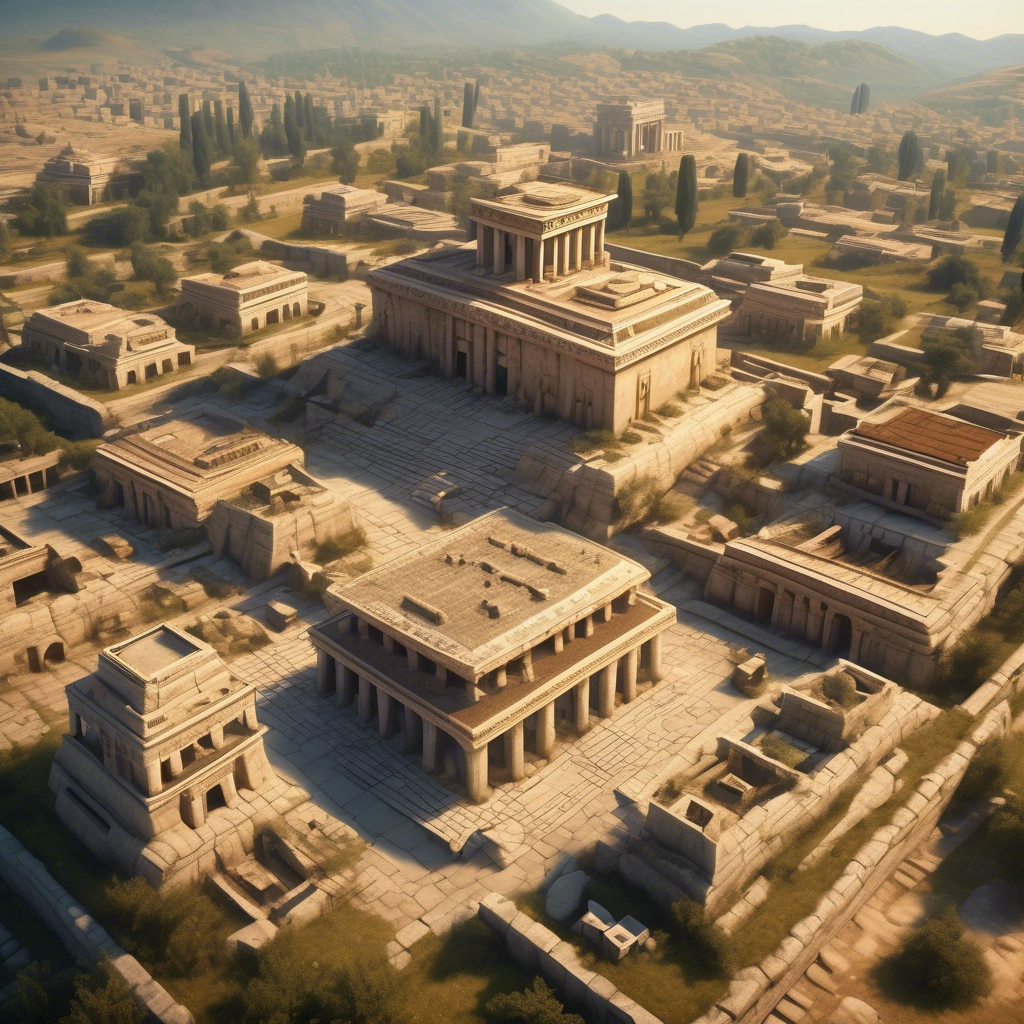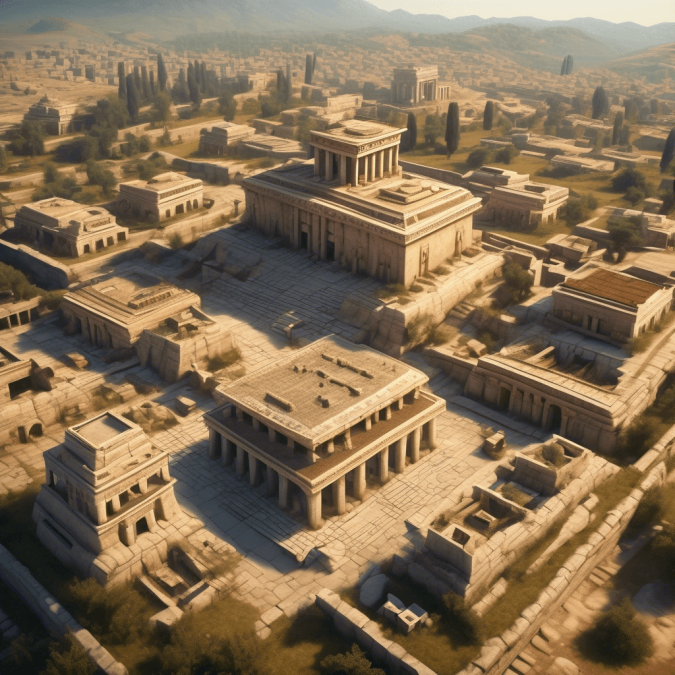
The Medes were an ancient Iranian people who lived in what is now northwestern Iran from the 6th to the 1st century BC. They established one of the first Iranian empires, known as the Median Empire, which reached its peak in the 7th and 6th centuries BC. The Medes were skilled warriors and played a significant role in the fall of the Neo-Assyrian Empire. They were also known for their sophisticated art and architecture. The Medes eventually fell under the rule of the Achaemenid Empire, led by Cyrus the Great, and their culture merged with that of the Persians.
The Medes were a diverse group of people, consisting of various tribes and ethnicities. They were primarily of Iranian origin and spoke an Iranian language. The Medes were known for their warrior culture and their ability to form powerful armies. They were skilled in horseback riding and archery, which made them formidable in battle.
The Medes had a hierarchical social structure, with a ruling class of nobles and a lower class of commoners. The nobles held the highest positions in society and had significant political and military power. The commoners, on the other hand, were primarily farmers and craftsmen.
Religion played an important role in Mede society, and they worshipped a pantheon of gods and goddesses. The chief deity of the Medes was Ahura Mazda, the god of wisdom and light. They also believed in the existence of various other deities and practiced rituals and ceremonies to appease them.
The Medes were known for their sophisticated art and architecture. They built grand palaces and fortresses, adorned with intricate carvings and decorations. Their art often depicted scenes from religious rituals, hunting, and warfare.
Overall, the Medes were a significant ancient civilization, known for their military prowess, cultural achievements, and their role in shaping the history of the region.
The Medes were led by various kings and rulers throughout their history. One of the most notable leaders of the Medes was Phraortes, who reigned in the late 7th century BC. He is credited with unifying the Medes and establishing the foundation for the Median Empire.
Another prominent leader of the Medes was Cyaxares, who ruled from the late 7th to the early 6th century BC. He expanded the Median Empire and successfully led the Medes against the Neo-Assyrian Empire, ultimately contributing to its downfall.
The most famous leader of the Medes was Astyages, who ruled in the 6th century BC. He was known for his conflicts with the rising Persian Empire, led by Cyrus the Great. Astyages was eventually overthrown by Cyrus, and the Medes were absorbed into the Achaemenid Empire.
It’s worth noting that the Medes had a decentralized system of governance, with various tribes and regions having their own rulers. However, during times of unity and empire, the Medes were typically led by a central king or ruler.
The Medes inhabited the region known as Media, which is located in present-day northwestern Iran. This area is part of the larger region known as the Iranian Plateau. Media was bordered by the Zagros Mountains to the west and the Caspian Sea to the north. It spanned a vast area, encompassing modern-day provinces such as Kurdistan, Hamadan, and parts of Azerbaijan.
The geography of Media was diverse, ranging from fertile plains to rugged mountains. The plains were suitable for agriculture and supported the Medes’ farming activities. The mountains provided natural defenses and served as hunting grounds for the Medes.
The Medes controlled a significant portion of the Iranian Plateau, extending their influence beyond Media to neighboring regions and tribes. They often engaged in territorial expansion and established an empire that stretched from the Zagros Mountains to the borders of Assyria and Babylonia.
Overall, the land of the Medes was characterized by its natural beauty, strategic location, and diverse landscapes, which played a crucial role in shaping the history and development of the Median civilization.
One of the major cities of the Medes was Ecbatana, also known as Hagmatana or Hamedan. Ecbatana was the capital city of the Median Empire and an important political and cultural center. It was located in present-day Hamedan Province in western Iran.
Ecbatana was strategically situated on a fertile plain and surrounded by seven concentric walls, each painted a different color. The city was known for its grand architecture, including palaces, temples, and administrative buildings. The Median kings, such as Astyages, had their palaces in Ecbatana.
The city was also renowned for its gardens, parks, and water channels. It had a well-developed infrastructure with paved roads, markets, and other amenities. Ecbatana was a bustling city with a diverse population, including Medes, Persians, and other ethnic groups.
Ecbatana continued to be an important city even after the fall of the Median Empire. It served as a regional capital during the Achaemenid Empire and later became a center of culture and learning under the Parthians and Sassanians.
Other notable cities in the Median Empire included Rhaga (present-day Ray), which served as an administrative center, and Aspadana (later known as Persepolis), which became an important city during the Achaemenid Empire.
The economy of the Medes was primarily agricultural, with farming being the main occupation of the majority of the population. The fertile plains of Media allowed for the cultivation of crops such as wheat, barley, grapes, and olives. The Medes were skilled farmers and practiced advanced agricultural techniques, including irrigation and terracing.
In addition to agriculture, the Medes engaged in animal husbandry, raising livestock such as cattle, sheep, and horses. They were known for their horsemanship and used horses for transportation, warfare, and trade.
Trade played a significant role in the Median economy. The Medes were located at a crossroads between the civilizations of Mesopotamia, Anatolia, and Central Asia, which made them a hub for commerce. They traded goods such as textiles, metals, precious stones, and agricultural products with neighboring regions.
The Medes also had access to valuable resources, such as iron and copper, which supported their metalworking industry. They were skilled in metalworking, producing weapons, tools, and decorative objects.
The economy of the Medes benefited from their political and military power. The conquests and expansion of the Median Empire allowed for the acquisition of wealth and tribute from subjugated regions.
Overall, the economy of the Medes was based on agriculture, trade, and craftsmanship, with their geographic location and resources contributing to their economic prosperity.
The Medes were known for their skilled and formidable army, which played a significant role in their rise to power and their military successes. The Median army consisted of a combination of professional soldiers and conscripted troops from various tribes and regions within the empire.
The Medes were particularly skilled in horseback riding and archery. They were known for their horse-mounted cavalry, which gave them a significant advantage in battle. The Medes were expert horsemen and used their mobility and archery skills to launch swift and devastating attacks on their enemies.
The Median army was organized into units known as “saka” or “asabara.” These units were led by nobles and commanders who held positions of authority within the military hierarchy. The Medes also employed chariots and infantry in their armies, although their cavalry remained their most formidable force.
The Medes were known to be fierce warriors, and their army played a crucial role in their conquests and military campaigns. They were involved in several conflicts, including wars against the Neo-Assyrian Empire and the Babylonians. The Medes’ military prowess was instrumental in the downfall of the Neo-Assyrian Empire.
After the fall of the Median Empire and the rise of the Achaemenid Empire, the Medes’ military traditions and tactics merged with those of the Persians, forming a formidable force that would go on to conquer a vast empire under Cyrus the Great and his successors.
There is limited information available about the specific philosophical beliefs and teachings of the Medes. However, as an ancient Iranian people, it is likely that they held religious and spiritual beliefs that influenced their worldview and understanding of the world.
The Medes practiced a polytheistic religion and believed in a pantheon of gods and goddesses. Their chief deity was Ahura Mazda, the god of wisdom and light, who was also worshipped by other Iranian peoples. They believed in the existence of various other deities, each associated with different aspects of life and nature.
It is possible that the Medes had their own unique religious rituals and ceremonies, although details about these practices are scarce. Religious beliefs and practices often played a significant role in shaping the philosophical and moral outlook of ancient civilizations, and it is likely that this was also the case for the Medes.
However, it is important to note that the Medes eventually came under the rule of the Achaemenid Empire, led by Cyrus the Great, and their cultural and religious practices merged with those of the Persians. The Persian Empire, in turn, had significant influences on the development of ancient Iranian philosophy, particularly through the teachings of Zoroastrianism, which emerged as a prominent religious and philosophical system during that time.
The Medes practiced a polytheistic religion, meaning they worshipped multiple gods and goddesses. Their religious beliefs were influenced by ancient Iranian traditions and mythology.
The chief deity of the Medes was Ahura Mazda, the god of wisdom and light. Ahura Mazda was considered the supreme god and creator of the universe. The Medes believed that Ahura Mazda controlled the forces of good and was associated with truth, order, and righteousness.
In addition to Ahura Mazda, the Medes worshipped various other deities, each associated with different aspects of life and nature. These included Anahita, the goddess of water, fertility, and healing; Mithra, the god of the sun, light, and justice; and Verethragna, the god of victory and war.
The Medes practiced rituals and ceremonies to appease and honor these gods. They likely made offerings, performed sacrifices, and participated in religious festivals and gatherings. These religious practices were important for seeking divine favor, protection, and blessings.
It’s worth noting that the religious beliefs and practices of the Medes eventually merged with those of the Persians after the rise of the Achaemenid Empire. This led to the development and spread of Zoroastrianism, a monotheistic religion that became the dominant faith in the region and influenced subsequent religious and philosophical developments in the Iranian world.
The Medes were known for their architectural and engineering achievements, particularly in the construction of grand palaces, fortresses, and other structures. Their architectural style was influenced by the traditions of the ancient Near East, including Mesopotamia and Assyria.
Ecbatana, the capital city of the Medes, was renowned for its impressive architecture. The city had grand palaces and administrative buildings, adorned with intricate carvings and decorations. The palaces were often multi-storied and constructed with materials such as stone, wood, and mud bricks.
The Medes were skilled in the use of arches and columns in their construction. They were known for their use of columned halls and entranceways, creating impressive architectural features. These elements were often decorated with ornate carvings and reliefs depicting scenes of royal life, religious rituals, and hunting.
In addition to palaces, the Medes built fortresses and defensive structures. These fortifications were strategically placed on hilltops or other elevated positions, providing natural defense and commanding views of the surrounding areas. The fortresses were constructed with thick walls, towers, and gates, designed to withstand sieges and protect the inhabitants.
The Medes also had advanced engineering skills. They were skilled in water management, constructing irrigation systems and aqueducts to bring water to their agricultural lands. They also built underground channels called qanats to transport water over long distances.
Overall, the Medes demonstrated their architectural and engineering prowess through the construction of grand palaces, fortresses, and sophisticated water management systems. Their architectural style and techniques influenced subsequent civilizations in the region, including the Achaemenid Empire.
